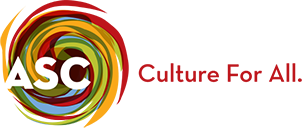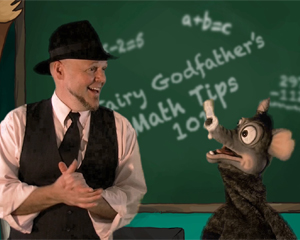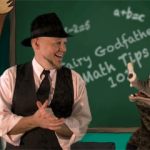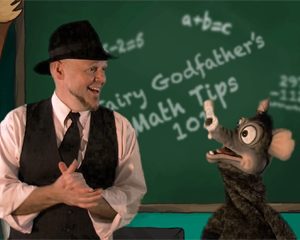Story Ship
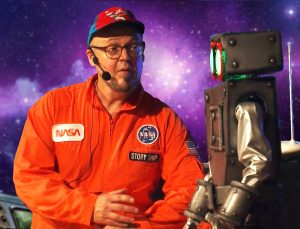
Sean Driscoll’s Story Ship Offers:
Immersive educational children’s shows and workshops using the latest technology combining robots, comedy theater, music, animation, puppets and magic.
Interactive animated shows – animated stories on a big screen with characters that talk with the audience and
…
View moreEducator CONTACT INFO
SELECT A PROGRAM
The Wand Of Dreams (Math Show)

Program Description
“The Wand Of Dreams”
(A Mathematical Fairy Tale)
The land of “Happily Ever After” is in big trouble. The Wand Of Dreams has been stolen and everything is falling apart! Fairy Godmother or Godfather and the audience have to round up the usual suspects to solve the mystery. Each suspect offers an interesting mathematical problem to solve as the mystery unfolds. You’ll meet a Magic Mirror with
...Booking / scheduling contact
Program Detail
Call for availability – 912-663-6320
TBA
One Table 6’X2′ and one Electrical Outlet
Anywhere
Same School / Venue: One Show: $895 · Two Shows: $1,195 · Three Shows: $1,295
Two or More Schools or Venues in Your Area Block Booking On Same/Consecutive Day(s): One Show: $795 · Two Shows: $1,095 · Three Shows: $1,145
EDUCATION STANDARDS
R1 – Read closely to determine what the text says explicitly and to make logical inferences from it; cite specific textual evidence when writing or speaking to support conclusions drawn from the text. (Students read text, view graphics and animations that accompany a mathematical mystery. The theatrical skits, texts and graphical animations give clues to how to solve the mystery.)
R2 – Determine central ideas or themes of a text and analyze their development; summarize the key supporting details and ideas. (Evidence for solving the mathematical mystery is given on a large screen video during the show. Details given found in the theatrical skits, animations and graphics help the students to use analytical skill to solve the mystery.)
R7 – Integrate and evaluate content presented in diverse media and formats, including visually and quantitatively, as well as in words.* (The set includes a large video screen with projected animation and graphics and sound to help students measure and understand mathematical concepts.)
From the Math Standards:
CC-K.MD Describe and compare measurable attributes. 1. Describe measurable attributes of objects, such as length or weight. Describe several measurable attributes of a single object. 2. Directly compare two objects with a measurable attribute in common, to see which object has “more of”/“less of” the attribute, and describe the difference.
CC-1.OA Represent and solve problems involving addition and subtraction. 1. Use addition and subtraction within 20 to solve word problems involving situations of adding to, taking from, putting together, taking apart, and comparing, with unknowns in all positions, e.g., by using objects, drawings, and equations with a symbol for the unknown number to represent the problem.
CC-1.MD, 2MD Tell and write time. 3. Tell and write time in hours and half-hours using analog and digital clocks.
CC-2OA Work with equal groups of objects to gain foundations for multiplication. 4. Use addition to find the total number of objects arranged in rectangular arrays with up to 5 rows and up to 5 columns; write an equation to express the total as a sum of equal addends.
CC-3.NF 1. Understand a fraction 1/b as the quantity formed by 1 part when a whole is partitioned into b equal parts; understand a fraction a/b as the quantity formed by a parts of size 1/b. 3. Explain equivalence of fractions in special cases, and compare fractions by reasoning about their size. a. Understand two fractions as equivalent (equal) if they are the same size, or the same point on a number line. b. Recognize and generate simple equivalent fractions c. Express whole numbers as fractions, and recognize fractions that are equivalent to whole numbers. d. Compare two fractions with the same numerator or the same denominator by reasoning about their size. Recognize that comparisons are valid only when the two fractions refer to the same whole.
From the Information and Technology K-5 Standards:
K-5.TT.1 – Use technology tools and skills to reinforce classroom concepts and activities.
From the Arts Education, Theatre Arts K-8 Standards:
K-5.A.1 – Analyze literary texts and performances.
K-5.C.1 – Use movement, voice, and writing to communicate ideas and feelings.
Qualifications
References
Ballentine Elementary
Shannon Page
1651 North McLaurin
Fuquay Varina, NC 27526
spage@gingerbreadlv.com
Lady’s Island Elementary
Lynda McLain
73 Chowan Creek Bluff
Beaufort, SC 29902
843-322-2293
“McLain, Lynda K” <Lynda.McLain@beaufort.k12.sc.us>
South Side Middle
Gloria Turner
2000 East Howe Springs Road
Florence, SC 29595
GTurner@fsd1.org
843-644-8467
Orange Grove Elementary
June Allen
1449 Joy Ave.
Charleston, SC 29407
June_Allen@ogecs.com
843-402-9703
Honea Path Elementary
Melanie Hahn
806 East Great Street
Honea Path, SC 29654
mhahn@anderson2.k12.sc.us
Cancellation Policy
Because The Story Ship’s acceptance of a performance agreement may cause it to turn down other work, the parties agree that if for any reason the services are canceled by the Presenter, Presenter must reschedule the event at the Presenter’s and Story Ship’s earliest convenience or pay 100% of the agreed fees.
